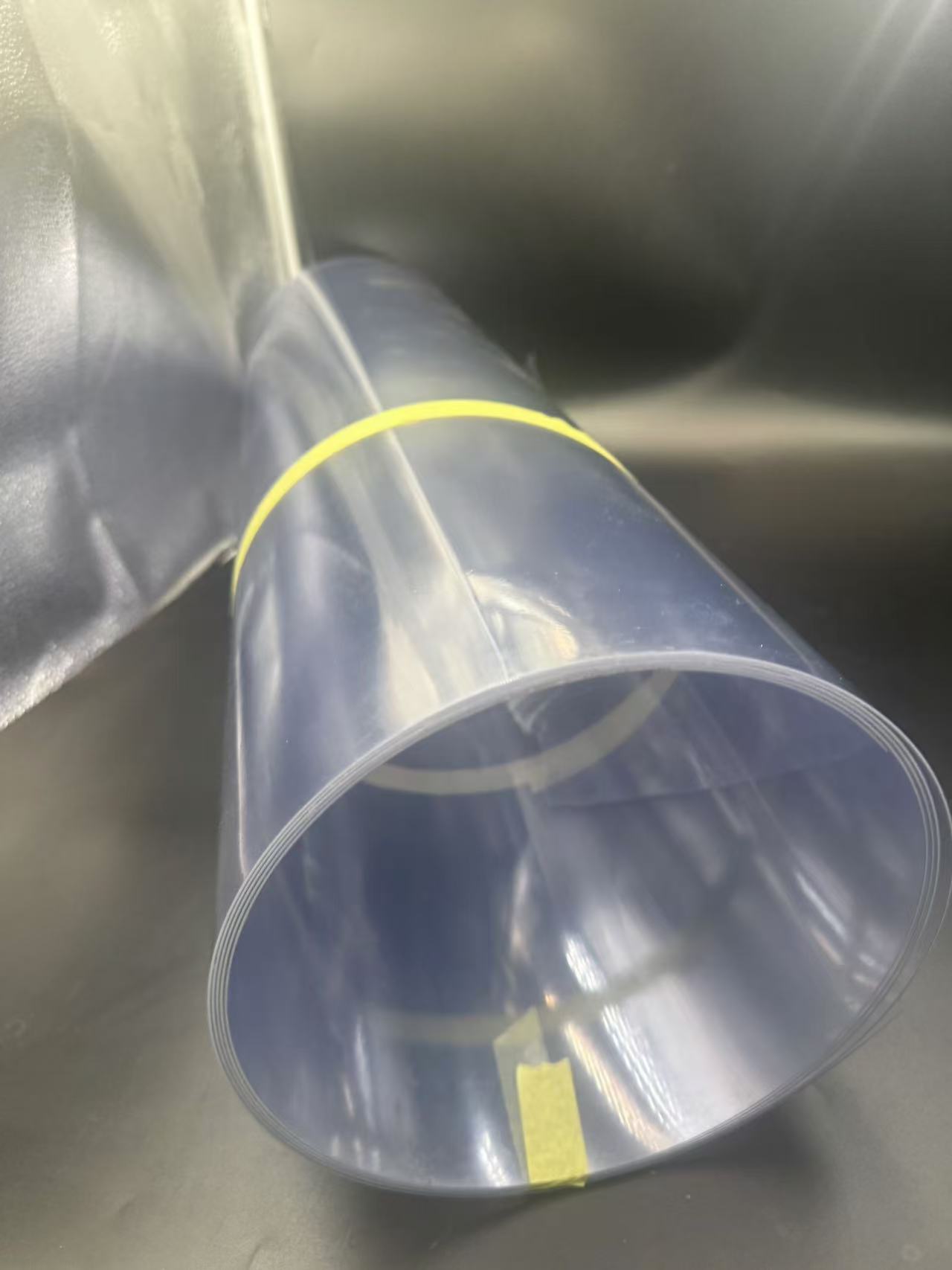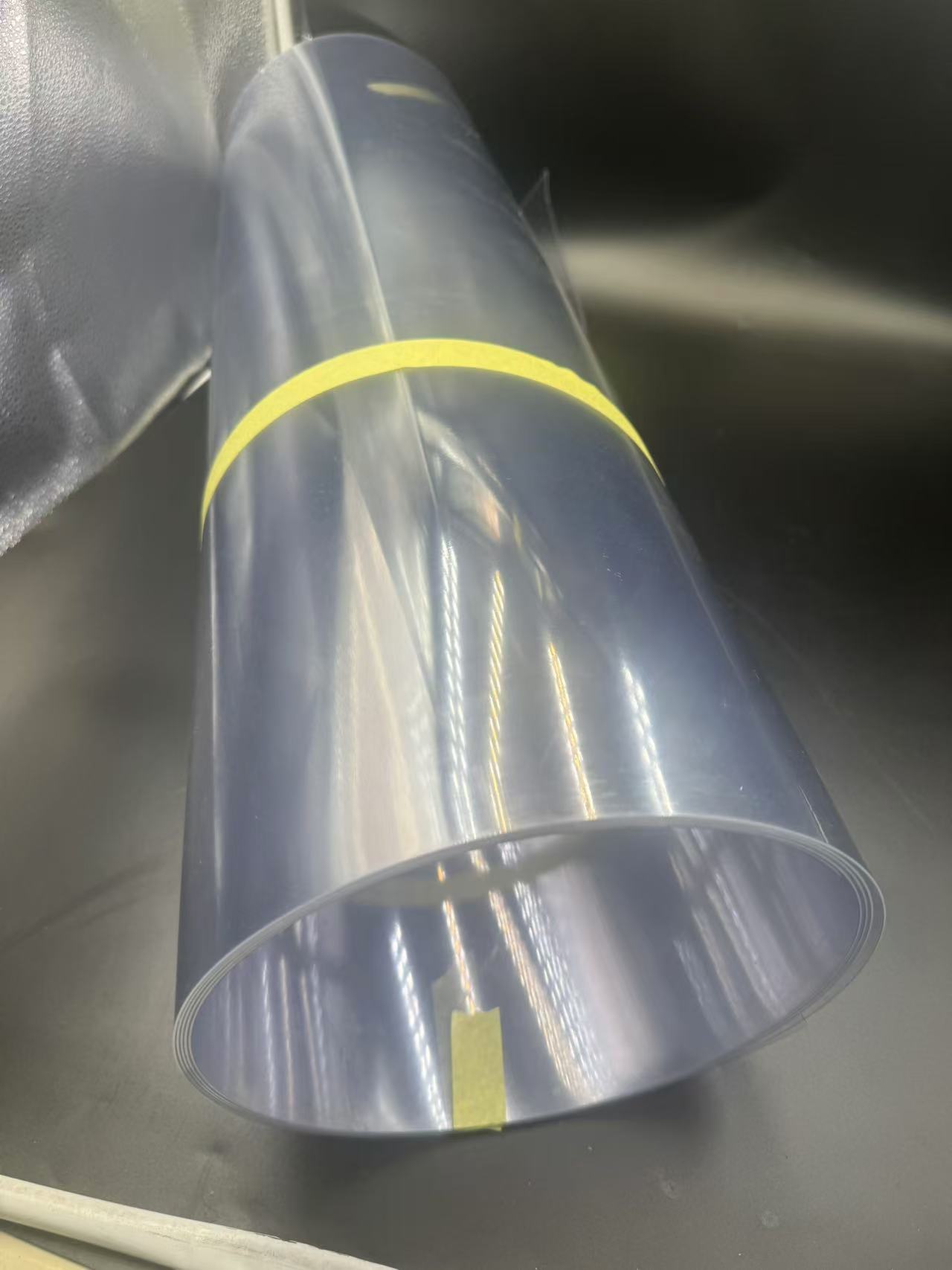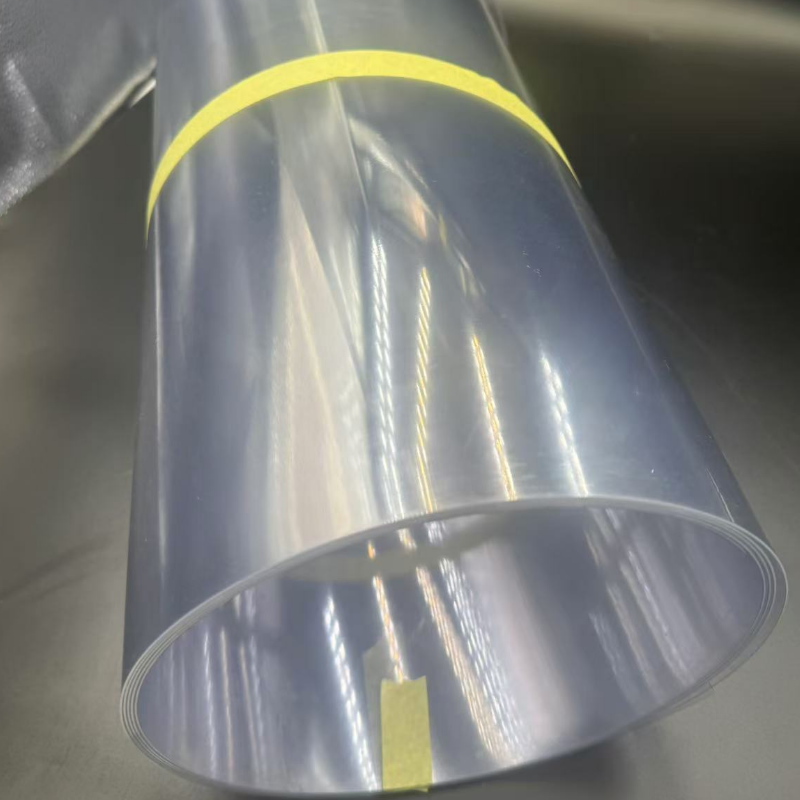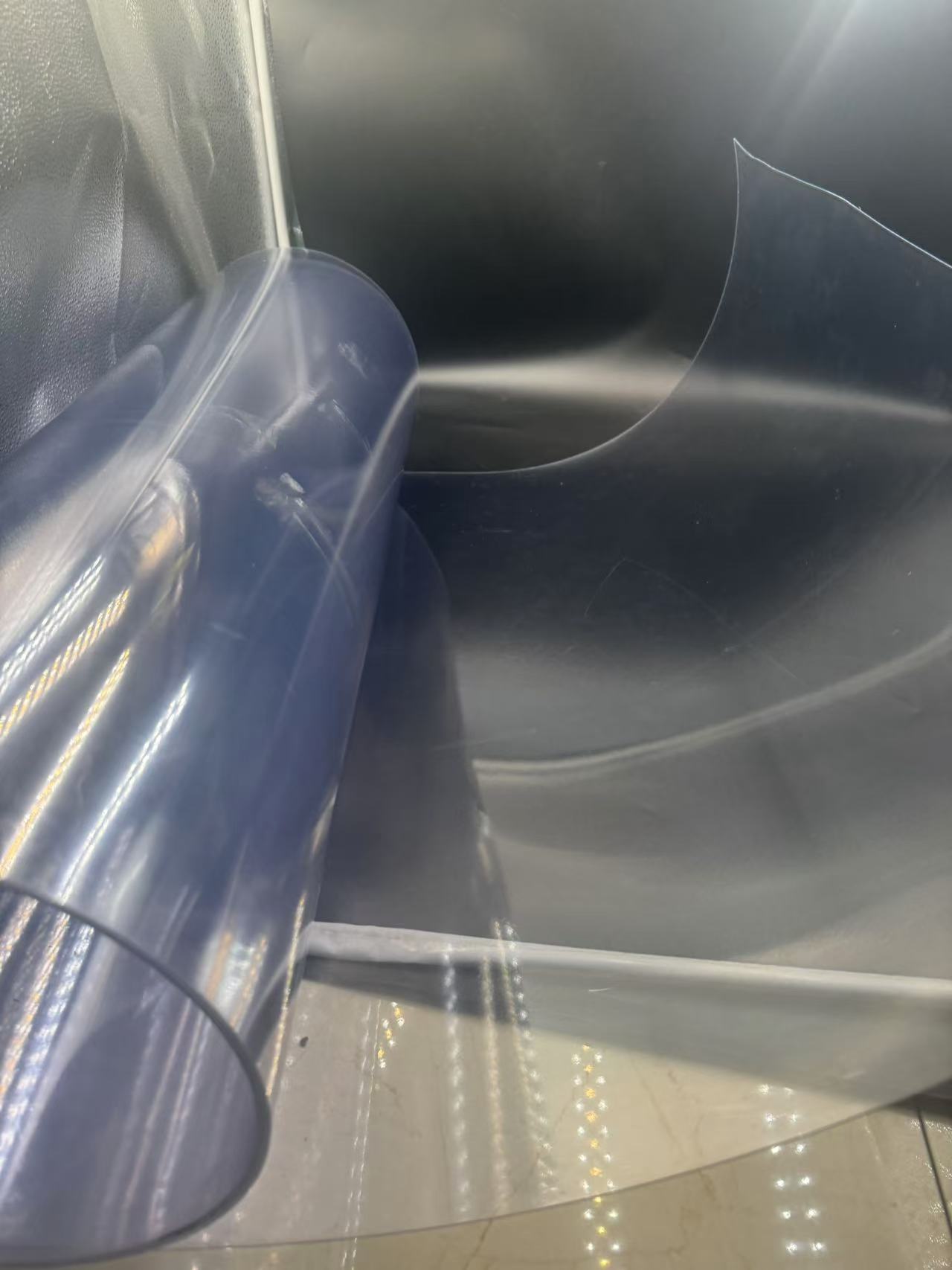

Polyvinyl chloride (PVC) film is a material that has become indispensable in the world of blister technology, seamlessly blending functionality with practicality.

From the protective shells encasing pharmaceutical tablets to the eye-catching packaging of consumer goods, PVC film stands out for its adaptability, strength, and affordability. But what drives its widespread use in blister products, blister molds, and blister packaging? How does it meet the rigorous demands of industries ranging from healthcare to retail? This article dives deep into the defining characteristics of PVC film and examines its pivotal role in shaping modern blister solutions. With a focus on evidence and real-world examples, we’ll uncover why PVC film remains a cornerstone in an ever-evolving landscape of design and production.

Characteristics of PVC Film
1. Exceptional Durability
At the heart of PVC film’s appeal lies its remarkable durability. As a thermoplastic polymer, PVC boasts a tensile strength ranging from 20-30 MPa, depending on its thickness and additives, outpacing alternatives like polyethylene terephthalate (PET) film, which typically caps at 15-20 MPa. This robustness stems from PVC’s molecular makeup, where chlorine atoms bolster its resistance to environmental stressors such as UV light, humidity, and temperature swings. For blister packaging, this durability translates into reliable protection for sensitive contents—think of a blister pack shielding delicate electronics from moisture or a pharmaceutical blister enduring years on a shelf without degrading.
Real-world testing backs this up: studies show that PVC film retains over 85% of its mechanical integrity after 18 months of exposure to outdoor conditions, a durability that PET struggles to match without additional coatings. This makes PVC film a go-to choice for blister products that need to withstand handling, shipping, and storage without compromising their structural integrity.
2. Superior Printability
PVC film’s smooth, non-porous surface is a dream for printing applications in blister packaging. Whether it’s vibrant branding on a toy blister pack or precise dosage instructions on a medication card, PVC film excels at holding ink with clarity and permanence. Its surface energy, typically hovering between 38-40 dynes/cm, ensures excellent adhesion for a variety of printing methods—digital, screen, or UV-curable inks—all of which deliver sharp, fade-resistant results.
Consider a retail blister pack for a gadget: the glossy PVC film showcases a high-definition image of the product, with colors that pop and text that remains legible even after months on display. Unlike polypropylene (PP) films, which often require corona treatment to enhance printability, PVC film is ready out of the gate, saving manufacturers time and resources. This printability is a key reason why PVC dominates in blister packaging where visual appeal and information clarity are non-negotiable.
3. Flexibility and Versatility
PVC film’s ability to adapt to different forms is a game-changer in blister technology. Available in thicknesses from 100 to 500 microns, it can be rigid enough to form sturdy blister molds or flexible enough to conform to intricate product shapes during vacuum forming. Plasticizers, added during production, fine-tune its elasticity— a 200-micron PVC film, for instance, can stretch up to 120% of its original length, making it ideal for creating tight-fitting blister packs or molds with complex contours.
This versatility shines in blister mold production, where PVC film is heated and molded over prototypes to create precise cavities. Picture a blister pack for a set of precision tools: the PVC film hugs every edge, ensuring a snug fit that prevents movement during transport. Its adaptability also extends to finishes—glossy for premium appeal, matte for understated elegance, or even textured for added grip—making it a material that balances form and function effortlessly.

4. Cost-Effectiveness
In an industry where margins matter, PVC film offers unbeatable value. Produced through efficient processes like extrusion or calendering, PVC resin costs around $1,100 per ton globally, compared to PET’s $1,500-$1,800 per ton. This cost advantage carries through to blister applications, where PVC film delivers high performance without breaking the bank. A typical blister pack made from PVC might cost $0.05 per unit, yet its durability ensures it outlasts cheaper alternatives that degrade quickly, driving up replacement costs.
For small-scale manufacturers crafting blister molds or startups designing budget-friendly packaging, PVC film is a lifeline. Its affordability doesn’t compromise quality— a PVC blister mold can withstand hundreds of cycles, while a printed PVC pack retains its appeal through countless consumer interactions, proving that cost-effectiveness and reliability can coexist.
5. Resistance to Chemicals and Moisture
PVC film’s chemical stability sets it apart in blister applications, particularly in pharmaceuticals and food packaging. It resists corrosion from acids, alkalis, and salts, ensuring that contents remain uncontaminated even in harsh environments. Additionally, its low water vapor transmission rate—around 3-5 g/m²/day compared to PET’s 10-15 g/m²/day—makes it a superior barrier against moisture, a critical factor for hygroscopic drugs or perishable goods.
In blister packaging, this resistance is a lifesaver. Imagine a blister pack of vitamins stored in a humid climate: the PVC film keeps moisture at bay, preserving potency. Its inherent flame-retardant properties, thanks to chlorine content, also add a safety layer, meeting standards like ASTM D2863 with a high limiting oxygen index (LOI) of 45%, far above PET’s 21%. This makes PVC a trusted choice where safety and stability are paramount.

Applications of PVC Film in Blister Products, Molds, and Packaging
1. Blister Products: Protection Meets Presentation
Blister products—those transparent, form-fitting shells that house everything from batteries to cosmetics—rely heavily on PVC film. Its clarity and strength make it ideal for vacuum-formed blisters that showcase products while safeguarding them. A 2021 industry analysis found that PVC-based blister packs maintained structural integrity 30% longer than PET equivalents under repeated stress tests, a testament to their durability.
Take a blister pack for a set of earbuds: the PVC film molds perfectly around the product, offering a crystal-clear view that entices buyers while protecting against dust and scratches. Its printability allows for branding directly on the film, eliminating the need for separate labels and streamlining production. From retail shelves to online shipping, PVC blister products deliver a winning combination of aesthetics and resilience.
2. Blister Molds: Precision and Longevity
In blister mold production, PVC film is a star player. Manufacturers use it to create temporary or permanent molds by heating the film and forming it over a prototype, often via vacuum or pressure molding. A 250-micron PVC film, for example, can withstand temperatures up to 80°C during forming without losing shape, ensuring precise cavities for consistent blister output.
Picture a pharmaceutical company producing thousands of blister packs daily: a PVC mold, crafted from film, holds up through hundreds of cycles, resisting wear and chemical exposure from cleaning agents. Its cost-effectiveness also means molds can be replaced affordably, keeping production lines humming. Compared to metal molds, PVC film molds are lighter and faster to produce, offering a practical solution for rapid prototyping or small-batch runs.
3. Blister Packaging: Security and Sustainability
Blister packaging, encompassing both the blister and backing card, leverages PVC film for its protective and presentational qualities. Rigid PVC films form the blisters, while printed PVC layers often serve as backings or inserts, providing tamper-evident security and branding opportunities. In pharmaceuticals, PVC blister packs dominate—over 60% of global tablet packaging uses PVC, according to a 2022 market report, due to its moisture resistance and compatibility with foil laminates.
Consider a blister pack for over-the-counter medicine: the PVC film creates a tight seal, keeping pills safe from humidity, while printed instructions on the film guide patients clearly. Beyond healthcare, PVC blister packaging shines in retail—think of a hardware store display where tools are securely encased yet fully visible. Advances in recycling also enhance its sustainability: initiatives like VinylPlus recycled 800,000 tons of PVC in 2021, with blister waste increasingly repurposed into new films, aligning with eco-friendly trends.

Conclusion
PVC film is more than a material—it’s a backbone of blister technology. Its durability ensures long-lasting protection, its printability elevates branding, and its versatility adapts to the unique demands of blister products, molds, and packaging. Affordable yet reliable, resistant yet recyclable, PVC film bridges the gap between practicality and innovation. Whether it’s a blister mold crafted with precision, a product encased for retail glory, or a package safeguarding life-saving drugs, PVC film proves its worth time and again. As industries evolve and sustainability takes center stage, this dynamic material is poised to shape the future of blister solutions, one resilient layer at a time.

If you are interested in the product, contact 2bvideo.com for more information for more information
The information of 2bvideo.com limited shown above is provided by the user or collected on the network. Video 2B does not guarantee the authenticity,accuracy and legitimacy of 2bvideo.com limited information. Video 2B does not involve legal relationships and disputes between users arising from transactions other than secured transactions on this website. Disputes shall be settled by you through negotiation. If you are the person in charge or relevant employee of this enterprise, if you find that the enterprise information is incorrect or want to manage thiscompany, please contact us jacklee1558@gmail.com, after you claim the enterprise, you can obtain management permission, publish supplyand demand information, bring consulting orders, and remove page advertisements.
Main Product:
PVC Rigid Film,
PET PETG Rigid Film,
HIPS Film,
PC Film,
PP Film,
Other plastic packaging products